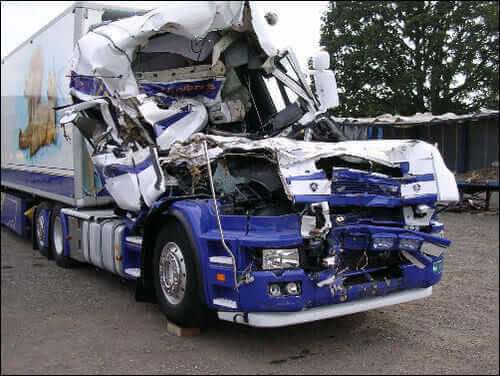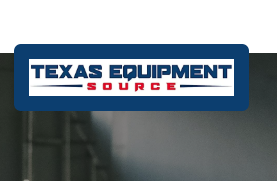When a truck gets damaged in an accident, most people think towing is the end of the story. But in reality, it is just the beginning of a detailed and important process. Once your accident-damaged truck is removed, several steps follow that involve safety checks, recycling, reusing parts, and protecting the environment.
Initial Assessment and Safety Checks
After removal, the damaged truck is taken to a holding yard for inspection. Skilled workers perform checks to identify safety hazards like leaking fluids, battery damage, or sharp metal edges. These inspections are necessary before dismantling begins. It ensures the process is safe for workers and prevents further damage to parts that could still be used.
Fluid Removal and Sorting
Before the truck can be dismantled, all fluids must be drained. This includes fuel, oil, brake fluid, coolant, and transmission fluid. These liquids are collected in separate containers and handled carefully. Some are treated and reused, while others are passed on to waste facilities that follow safety rules. This step prevents toxic materials from reaching the soil or waterways.
Explore truck removal services available in Tivendale: https://pscarremoval.com.au/locations/tivendale/
Careful Dismantling and Separation
Once fluids are removed, the dismantling process starts. Mechanics remove parts one by one, including mirrors, bumpers, doors, engines, and air conditioning units. Each part is tested and stored according to its condition. Items that cannot be saved are placed in separate containers for recycling or safe disposal. Proper dismantling ensures that nothing useful goes to waste.
Reuse of Salvageable Parts
Many parts from damaged trucks still work perfectly. Items like transmissions, alternators, headlights, and gear systems are carefully cleaned and tested. Once approved, they are made available to auto repair shops or individuals looking for affordable replacements. This practice supports the idea of reuse and helps reduce the demand for new parts.
Metal Recycling and Frame Processing
The main frame of a truck is often made of strong metals such as steel and aluminium. Once dismantled, the body is crushed and sent to recycling plants. These facilities melt the metal and turn it into raw materials used in other industries. This not only reduces the need for mining but also lowers energy use in manufacturing new metal products.
Proper Disposal of Non-Recyclables
Not all materials from a damaged truck can be reused. Items like burnt seat cushions, broken glass, and plastic components may be beyond repair. These are collected separately and sent to secure landfills that follow disposal rules. This careful handling helps in reducing environmental damage and keeps hazardous items away from residential areas.
Legal Checks and Documentation
After dismantling, all documents linked to the truck are verified. The vehicle’s registration, ownership, and identity numbers are recorded. Once confirmed, the truck is officially marked as dismantled. This ensures the previous owner does not face legal issues in the future, such as registration renewals or fines.
Promoting Safe Disposal in Pinelands
In regions like Pinelands, where large vehicles regularly move through both city and industrial areas, the need for proper truck disposal is even more important. When an accident occurs, timely removal is vital not just for road safety but for the well-being of the surrounding environment. A removal service offered in this area by PS Car Removal plays an important role in managing this process responsibly. Their organised removal system ensures that each damaged truck is handled with care from pickup to processing, supporting recycling efforts and maintaining local road safety.
Role of Technology in Vehicle Processing
New tools have improved the way trucks are handled after removal. Digital scanning devices help workers identify reusable parts quickly. Tracking software keeps a record of where each part goes, whether it is resold, stored, or recycled. This helps prevent confusion, reduces time, and makes the process more reliable from start to finish.
Contribution to the Local Economy
The process of removing and processing accident-damaged trucks supports more than just the towing industry. It creates work opportunities for drivers, technicians, recyclers, and administrative staff. Auto shops also benefit by gaining access to second-hand parts, which are often in high demand. This system supports small businesses and encourages resource efficiency.
Environmental Benefits of Proper Truck Removal
When trucks are processed properly after removal, the environment benefits greatly. Fluids are kept out of rivers and soil. Scrap metal is reused, which means less energy is spent on mining and refining raw materials. Air pollution is reduced as well since recycled metal uses less fuel to produce compared to new material.
Worker Safety and Site Clean-Up
Safety is a priority at every stage of the process. Workers are given the right gear such as gloves, helmets, and steel-toe boots to protect them during handling. The site where the truck was removed is also checked thoroughly. Any broken glass, leaked fluid, or scattered debris is cleared to make the area safe for others.
Changing Trends in Disposal Methods
As awareness grows, so does the need for more responsible ways of handling damaged vehicles. New techniques are being introduced to recycle more materials, including dashboard plastics and seat fabrics. Manufacturers are also designing trucks with easier dismantling in mind. These changes make the entire process more efficient and safer for both workers and the environment.
Community Focus on Truck Removal
In areas where traffic is dense and industrial vehicles move frequently damaged trucks must be cleared quickly and safely. The process helps avoid further disruption and supports cleaner surroundings. Services like Truck Removal Pinelands play a part in making sure these vehicles are collected without delay and processed through proper channels. This timely action reduces road risks and supports better waste handling across local communities.
Final Thoughts
Removing a truck after an accident may seem like a simple task, but the journey that follows is full of meaningful steps. From draining and dismantling to documentation and recycling, each stage plays an important part in reducing waste, keeping roads safe, and protecting natural surroundings. By understanding what happens beyond towing, truck owners and communities can appreciate the value in responsible vehicle processing.







0 Comments